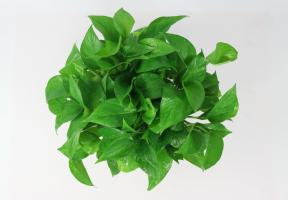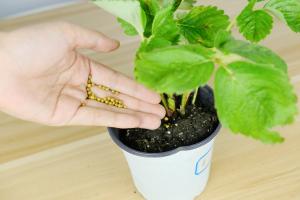How to Plant Paw Paw Tree Seeds
Paw paw trees, also known as Asimina triloba, are native to North America and have been cultivated for centuries for their delicious fruit. If you're interested in growing your own paw paw trees, you'll need to start with the seeds. Here's a step-by-step guide on how to plant paw paw tree seeds:
Step 1: Collecting the Seeds
Paw paw fruits are usually ready for harvesting in the fall, around September or October. The fruits will be soft to the touch and will usually have a yellow or brownish hue. When the fruits are ripe, pick them from the tree and cut them open to reveal the seeds inside. The seeds will be about the size of a bean and will have a brown color.
Step 2: Preparing the Seeds
Before planting the paw paw tree seeds, they will need to be cleaned and prepped. Start by rinsing the seeds in a bowl of water to remove any remaining fruit pulp. Next, place the seeds in a strainer and rinse them again under running water. Once the seeds are clean, let them dry on a paper towel for a few hours.
Step 3: Germinating the Seeds
The next step in planting paw paw tree seeds is to germinate them. To do this, you'll need to moisten a paper towel and place the seeds inside. Fold the paper towel in half and place it in a plastic bag. Seal the bag and place it in a warm, dark place, such as in a closet or cupboard. After a few weeks, the seeds should start to sprout.
Step 4: Transplanting the Seeds
Once the paw paw tree seeds have sprouted, it's time to transplant them to the soil. Start by filling a small pot with a good quality potting mix. Make a small hole in the center of the potting mix and gently plant the seed, making sure the root is pointing downwards. Cover the seed with a small amount of soil and water gently.
Step 5: Caring for Your Paw Paw Tree Seedling
Once the seedling has been planted, keep it in a warm and humid environment until it has developed a strong root system. After a few months, the seedling can be transplanted into a larger pot or directly into the ground. Paw paw trees prefer well-draining soil and partial shade, so choose a spot in your garden that receives morning sun and afternoon shade. Water the tree regularly and fertilize it with a slow-release fertilizer every three months.
Conclusion
Planting paw paw tree seeds can be a fun and rewarding experience. While it may take a few months for the seedlings to grow into mature trees, the delicious fruit that the trees produce is well worth the wait. By following these simple steps, you can successfully plant and care for your very own paw paw tree.

 how many times do yo...
how many times do yo... how many planted tre...
how many planted tre... how many pine trees ...
how many pine trees ... how many pecan trees...
how many pecan trees... how many plants comp...
how many plants comp... how many plants can ...
how many plants can ... how many plants and ...
how many plants and ... how many pepper plan...
how many pepper plan...
































